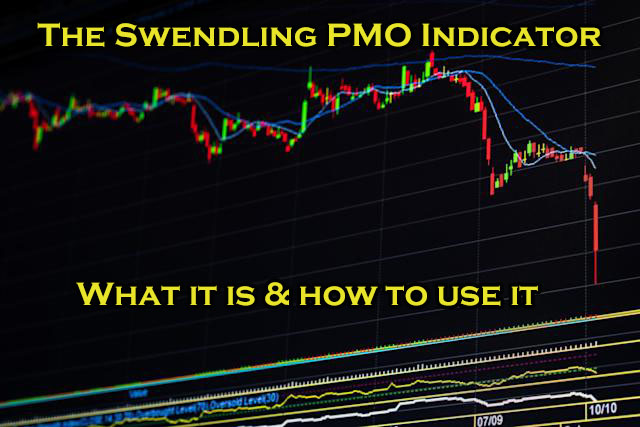The Swendling PMO Indicator is a momentum indicator that can be used to identify overbought and oversold levels, as well as key turning points for stocks. The oscillator is based on a Rate of Change (ROC) calculation, which makes it a relative strength tool. Additionally, the PMO can be used as a momentum indicator- in other words, it tracks the percentage that tracks the rate of change in price.
One example of a momentum indicator is the Stochastic indicator, which uses different parameters to track market sentiment (historical profitability). As with all indicators, it’s important to experiment with different settings and timeframes to find what works best for you.
Key Sections
- 1 This Indicators Description
- 2 Calculation
- 3 Interpretation
- 4 Overbought/Oversold Indicator as Stock Price Indicators
- 5 Momentum Indicator
- 6 Signal Generator
- 7 PMO Configurations
- 8 Conclusion
- 9 When looking for information on the swendling PMO indicator they also asked these questions
- 10 What is the PMO indicator?
- 11 How do you read a PMO indicator?
- 12 What is Technical Analysis?
This Indicators Description
The Price Momentum Oscillator (PMO) is an ROC-based study developed by Carl Swenlin. So the Swendling PMO Indicator measures the rate of change between two moving averages, and is used to identify overbought and oversold conditions in a security or index.
Extremely high readings of the PMO indicator may suggest that the stock or index is currently overbought, whereas extremely low readings may signify that it is oversold. The main PMO plot describes the trend of price; the signal line is an exponential moving average of this. Divergences between the price plot and PMO line may signify important changes in the trend. The main line (PMO) and signal line (signal line) cross when potential buy or sell signals are present.
A second exponential moving average is used to smooth the rate of change in a signal line. This length of this second EMA determines how long a signal will remain active for before it’s considered irrelevant. Finally, a buy/sell threshold can be set to create more accurate buy and sell signals; when prices move above or below this level, traders can take action accordingly.
Calculation
The Price Momentum Oscillator (PMO) is a volatility oscillator, derived using custom smoothing functions. It was developed by Carl Swenling.
It is calculated using where the PMO line is 10-period EMA of the PMO Line. The smoothing multiplier and custom smoothing function are used to calculate the price movement for a given period, say 35 days.
Interpretation
When looking at the PMO, you want to consider the direction of the indicator and the steepness of the trend angle. The PMO direction will tell you if strength is increasing or decreasing, while the steepness of the trend angle demonstrates power behind that movement.
Keep in mind that the PMO is an internal ratio, whereas MACD is a moving average calculation. The MACD tends to be more volatile on shorter-term charts, while the PMO is fairly constant.
The PMO has a higher advantage when charting over longer periods of time than does MACD; this makes it easier to spot changes in trends.
Overbought/Oversold Indicator as Stock Price Indicators
An overbought/oversold indicator is a tool used by the investment community to determine if an index is overbought or oversold. When an index has been moving too far in one direction, this tool can help investors identify when the trend is reversing and it’s time to sell or buy.
The PMO (price momentum oscillator) is one such indicator that changes direction at or beyond the extremes of its normal range. This change signals an intermediate-term change in price direction. So, if you’re seeing the PMO signal a reversal on your charts, it’s time to start paying attention!
It’s important to remember that markets always have a range that is considered normal. You can use a longer-term chart to verify the normal range of an index you are analyzing before relying too heavily on any indicators. Remember: monthly indicators may look completely different from daily indicators, depending on the timeframe being addressed.
Finally, keep in mind that technical indicators are calculated based on time periods within the timeframe being analyzed. So, a monthly indicator will be very different than a daily indicator – even if they’re both looking at the same index!
Momentum Indicator
Momentum indicators are used to measure the speed and magnitude of price changes. In general, these indicators move in the same direction as prices. There are a number of different types of momentum indicators, but all have one common goal: to detect when a market is overbought or oversold.
One popular momentum indicator is the PMO (Price Momentum Oscillator). This indicator measures the steepness and smoothness of price movements. It also gives early warning signals on market tops and bottoms. The PMO can be used to predict directional changes in a market.
The two negative divergences shown by red lines indicate important tops and warn of important lows. The positive divergence shown by green lines indicates an important bottom and the beginning of a new trend cycle.
Signal Generator
The Signal Generator is a handy tool used to determine market direction for stocks. The 20/50/200-EMA crossover setting is the most popular, but other settings are available. The PMO (Price Momentum Oscillator) can also be used as an indicator to confirm or deny signals.
When using the Signal Generator, traders should always keep in mind the following:
- The PMO should be used as an indicator, not traded mechanically.
- Crossover signals are shown on the chart above and can be confirmed with the help of the PMO’s strength and momentum.
- Use caution when trading against the trend!
PMO Configurations
There are many types of PMO configurations that can occur, including clean signals with little gyrations. A study of the charts will give a better understanding of what kind of price action to expect from a given type of PMO. The chart reveals an important detail about the behavior associated with a certain type and share it with readers. The key takeaway is that this chart gives more insight into how PMO behavior could affect prices, so it’s beneficial for traders to keep an eye on this data.
Conclusion
In conclusion, the PMO indicator can a helpful tool that can be used to predict price reversals. It can be helpful in determining when a bull or bear market is forming, and it can also be used to anticipate changes in market momentum. By understanding how to read the signal lines and interpret the data, traders can use this information to make more informed decisions about their investments.
But in all honesty, it’s not a very popular indicator used by traders.
When looking for information on the swendling PMO indicator they also asked these questions
What is the PMO indicator?

The price momentum oscillator indicator is used to measure the speed and magnitude of a security’s price movements. It is calculated by taking the difference between a security’s current price and its price n periods ago, and then dividing that number by the security’s price n periods ago multiplied by 100. The resulting number is displayed as a percentage.
A positive percentage indicates that the security’s price is increasing faster than it was n periods ago, while a negative percentage indicates that the security’s price is decreasing faster than it was n periods ago. The higher the percentage, the greater the magnitude of the security’s recent price movements.
How do you read a PMO indicator?

The general idea is to look for situations where the momentum is diverging from the price. For example, if the price is making new highs but the momentum is failing to make new highs, that could be a sign that the uptrend is losing steam and could be ripe for a pullback.
Conversely, if the price makes a new low but momentum fails to confirm it, that could be a bullish sign worthy of further consideration. Of course, these are just two examples and there are many different ways to use momentum oscillators. But hopefully this gives you a general idea of how they can be used in conjunction with price charts.
What is Technical Analysis?

Technical analysis is a trading method that uses the study of past prices and volume data to determine future patterns. It is one of the oldest forms of investment analysis and can be used to trade stocks, futures, commodities, and Forex.
There are many different technical indicators that can be used in technical analysis. Some common indicators include moving averages, MACD, RSI, Stochastics, Bollinger Bands, and Ichimoku Clouds.
Technical analysts use these indicators to identify trends and chart patterns in order to make trading decisions. Many traders find that technical analysis is a more systematic way to trade than fundamental analysis.

